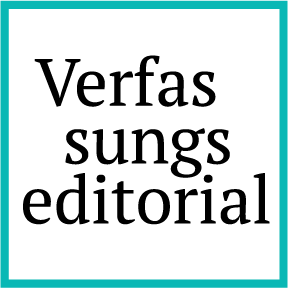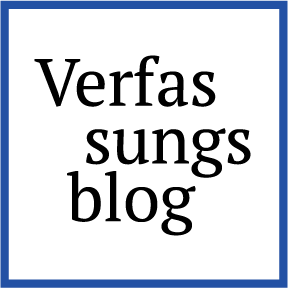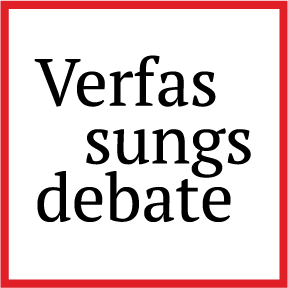Thou Shalt Not E-lend
How a CJEU Decision Caused a Legal, Technological and Market Gridlock
In Europe, public libraries need to obtain permission, or pay compensation, for the act of lending books to the public. It is not sufficient for a library to buy a copy of a book from a bookshop or from a publisher’s website. This is the case in many countries around the world, most notably the US, but not in the EU.
This state of affairs dates back to the 1992 (codified in 2006) Rental and Lending Directive (RLD), whereby authors acquired a new and transferable legal entitlement, a right to authorise or prohibit the act of public lending. Libraries interested in public lending must now – i.e., after the entry into force of the Directive where a similar right did not already exist under domestic law – acquire permission from authors, or more frequently, as the AG in the VOB opinion pointed out at 34, rightsholders.
Crucially, however, the 1992 EU legislator, aware of the fundamental role of public libraries for cultural and educational policies, foresaw the possibility for Member States to derogate from the exclusive right to public lending “provided that at least authors obtain a remuneration for such lending” (Art. 6.1 RLD). This is a very important provision, as it not only empowers libraries to support national cultural policies, but also creates a direct stream of revenue for authors.
In other words, the act of lending by public libraries, an act with recognised fundamental public value for large shares of the population became an activity under the control of the relevant rightsholder, unless national legislators, acknowledging the importance of libraries’ agency and autonomy, derogate to such an exclusive right and create a national remuneration scheme benefitting at least authors, or exempt certain categories of libraries entirely (as allowed by Art. 6.3 RLD).
Public lending, commerce, and culture
The RLD defines public lending as “the making available for use of a work for a limited period of time, not for direct or indirect commercial advantage through public accessible establishments”. The nearly equivalent commercial version of this activity (i.e., rental) is also regulated by the same directive but receives a rather diverse treatment precisely because of the fundamental difference in scope: non-commercial and usually in the public interest by publicly accessible establishments the former, commercial the latter.
It is only within the special case of public lending that it is possible for Member States to move from an exclusive to a remuneration right. This derogation does not only have important monetary repercussions (e.g., who decides how much to pay). A remuneration right allows public libraries to decide how to best pursue their own cultural, educational and learning objectives. Remuneration schemes mean that libraries do not need to seek “permission” or negotiate a licence. They just buy the books that they want and lend them. Thereafter, authors are compensated via the relevant national remuneration scheme. But it is the library who performs decisions directly affecting its public institutional mandate. It is not someone else (an author, a right holder, or more frequently a publishing platform) who decides whether, when, for how much, or how many times libraries can lend books to their patrons.
This general scheme, and its national implementations, worked relatively well to this point and struck a balance between the fundamental function of libraries in promoting culture and education on the one hand with the policy objective to offer a high level of protection to authors, usually via remuneration, on the other. At least when it comes to physical books.
From lending to e-lending
The RLD was enacted more than 30 years ago. During this time technology has advanced significantly. Regarding the specific case of books, technological advancement has contributed to a shift in the way in which the knowledge therein contained is conveyed. The information that was traditionally printed on the paper of pages is increasingly transmitted via their digital equivalent: eBooks.
As it often happens with the advent of new technologies, the question is whether the “old” law still applies. In other words, can the lending of digital copies, i.e., e-lending, be performed on the same legal basis as traditional lending? This is an important question because it implies that Art. 6 RLD, which offers Member States the possibility to move from an exclusive right (authorisation first) to a remuneration right (pay later) directly benefitting authors, also finds applicability.
For many years the answer to this question wasn’t completely clear, but the majority opinion was negative: e-lending is not a form of lending but rather a form of communication to the public, a different exclusive right in the field of copyright. This means that the communication to the public taking place when performing the act of e-lending must be authorised separately by the rightsholders, absent a specific exemption equivalent to that of Art. 6.1 RLD, an exemption that is absent in the EU copyright acquis.
Accordingly, e-lending in the EU has been operating on the basis of licensing e-books from publishers or e-lending platforms. This is a crucial passage: if e-lending, legally speaking, is not a form of lending, it also cannot benefit from the derogation contained in Art. 6 RLD which has the double function of empowering libraries and directly remunerating authors.
Understanding technology
Digital technologies are powerful instruments. They may allow the spreading of the knowledge contained in one book to as many readers as one can think of, thereby removing previously insurmountable physical barriers. Think of the one-to-one limitation of traditional book lending: one physical book can be lent only to one user at a time. But a digital copy can be sent to as many users as necessary. Several examples could show how market practices that relied on physical constraints are subverted by new technologies. However, the economic impact of these new possibilities should not be underestimated: If one single book can lead to hundreds of digital copies the demand for physical copies of that book may decrease and so would revenues for rightsholders.
Seen from the supply side, digital technologies also promise immense advantages. They afford much more granularity to the mechanisms regulating the exploitation of products. For instance, by employing specific access and control technologies (APIs, DRM, TPMs), it is possible to regulate (digital) uses in ways simply not feasible or practical with physical counterparts. Digital lending permits control over how long the lending can last, how many times a single copy can be lent, and also how many times a copy can be read and by whom. Not that certain acts were not possible before: As any library user has experienced once or twice in their life, the maximum duration of lending is not too difficult to surpass, and there is an enforcement mechanism (e.g., fines) attached to that. But holding a physical copy allows its user to read it, even if exceeding the set maximum number of days.
With digital technologies this is brought to an entirely new level: if you exceed the maximum number of days, the digital copy may simply vanish. This much more pervasive form of control takes place in various moments or phases of the exploitation of books, not only in relation to duration. A digital copy could suddenly become inaccessible because of how many users have opened that copy, or how many times that copy was read, or on how many devices. And of course, readership and attention data (what titles are read the most, how long does it take to read them, how much time do you spend on each page, or where do you take a pause) become very valuable commercially.
However, as seen above, public lending is a non-commercial cultural activity in the public interest. Subjecting it to pure market logic implies – despite evident privacy concerns – the application of the same rule to two very different situations. These fundamental differences in nature, function, and scope with commercial acts (e.g., rental) are the very same reasons that justified the derogation contained in Art. 6 RLD for physical lending. Why should it not apply to digital lending as well?
This question was answered in the seminal 2016 VOB case (Vereniging Openbare Bibliotheken v. Stichting Leenrecht). In this decision the CJEU stated that the RLD applies also to e-lending when performed following certain conditions. When lending is performed by publicly accessible libraries, for a limited period of time, in a way that is functionally equivalent to physical lending, particularly when digital copies are lent on the basis of the “one-copy-one-user” principle, the RLD applies.
The Court, however, specified another condition, one that is particularly relevant. In light of previous case law such as ACI Adams (private copy exception), the Court established that e-lending can only take place when the public library employs a lawful source. While apparently a common-sense provision well integrated in the EU acquis, the issue of lawful source has proved highly problematic to the point of essentially nullifying the ruling in VOB, i.e., the possibility for public libraries to rely on the RLD.
Where can libraries obtain lawful sources of books?
A first logical option is obviously digitising their vast physical collections. But it is far from clear that this would be a legal source. The digitisation of physical copies in copyright parlance corresponds to the exclusive right of reproduction and therefore must be authorised by rightsholders (contract) or the law (exceptions). Whereas the law allows libraries to digitise works in certain cases, this is usually for a very limited scope (preservation, for example, or use on local dedicated terminals). This means that libraries most likely cannot (for a partially different view, see here) make digital copies of their collections for the purpose of e-lending. It is important to note that in a different case (Technische Universität Darmstadt) the CJEU partially opened the door to the possibility of Member States implementing certain exceptions in a way that, applied to the present case, could be used to justify the digitisation of libraries’ collections as a proper lawful source for the purpose of e-lending.
That said, however, not only the notorious risk aversion of libraries, but also the fact that no Member State has yet acted in this direction – that is, has construed a national copyright exception in a way that links digitisation done on the basis of, for example, Art. 5.3.n ISD to the act of e-lending as interpreted by the CJEU in VOB – has constrained this option mainly to the area of academic speculation.
Accordingly, the only other way to have a lawful digital version of a book (an eBook) is to buy it from the publisher or publishing platform. Except that publishers do not sell eBooks, they license them. This means that the only actual option for libraries to have a “lawful digital copy” is to license it from rightsholders who, quite logically for a private actor institutionally mandated to seek profit, employ the same business models described above. Paradoxically, this is precisely the situation that the court in VOB – and the legislator in the RLD – wanted to avoid.
Solving the issue of e-lending
The CJEU in the VOB case has offered ample support for the need to include e-lending in the scope of the RLD. This interpretation not only recognises the public interest of society at large in accessing knowledge necessary for cultural, technological and economic development, but also supports authors who, thanks to the derogation of Art. 6 RLD, are entitled to specific remuneration. As the AG in VOB pointed out, excluding eBooks from the RLD has really only one beneficiary: digital publishing platforms.
However, the Court missed the techno-regulatory turn in this story. Requiring a lawful source in a market dominated by a handful of digital platforms and subjecting such a requirement to the initial consent of rightsholders is tantamount to a surreptitious yet sweeping refutation of the preceding line of argumentation in what can only be categorised as a (techno-regulatory) logical fallacy.
The fallacy can be solved. Chiefly, by clarifying on the legislative or interpretative levels (EU and/or national) that within the meaning of public (e-)lending the digitisation of physical copies held by libraries represents a form of lawful source. This will allow libraries to leverage their impressive and already lawfully acquired physical collections, while maintaining the one-copy-one-user rule. Additionally, it would be of equal fundamental importance to intervene in areas that bridge copyright law with contract, competition, and consumer law. This approach would be functional to the reestablishment of a degree of fairness in copyright contracts between big digital platforms and libraries. These interventions should include Fair, Reasonable and Non-Discriminatory (FRAND) provisions, pricing transparency, protections against contractual and digital override, and a limitation of anticompetitive acts such as bundling, refusal to license, and other abusive practices.




To continue our conversation in public…
In our (just published) empirical market study of eLending markets in Denmark, Republic of Ireland, Poland and the UK, it becomes clear that that the digitisation of physical copies held by libraries (as a possible lawful source) will not be the solution. It’s only a “drop on a hot stone”. Applying competition law and copyright law perspectives to the findings, the key issue is the contractual relationship between libraries and publishers (as the only suppliers of digitally borne copies). Libraries need to be able to build sustainable digital collections which are not subject to bundling or discontinuation. A digital preservation copy may be needed as a backstop.
We analyse seven problematic practices:
(1) Refusals to supply: outright and withdrawals;
(2) Constructive refusals to supply: restrictive licensing conditions/delayed supply;
(3) Bundling;
(4) Unfair trading conditions;
(5) Excessive pricing;
(6) Avoidance of the spirit of other laws, e.g. the copyright exception for text and data mining;
(7) Lack of transparency.
https://www.create.ac.uk/blog/2025/10/15/knowledge-markets-of-dysfunction-do-libraries-have-a-future/